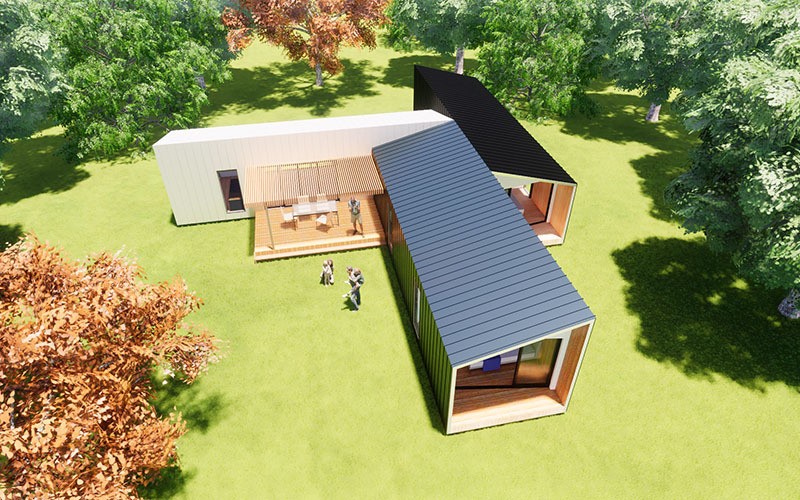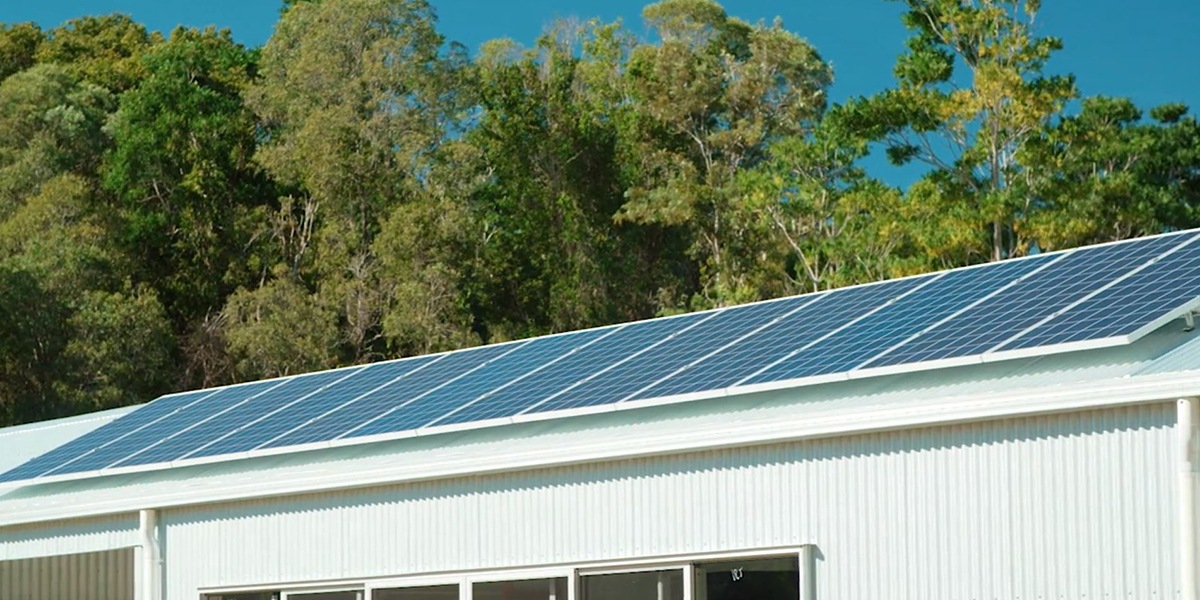
The power of being your own utility provider. Vaughn and Louise talk about the sense of control and independence gained from off-grid living.
Planning For Independence
Vaughn and Louise are their own utility providers. This gives them a sense of control, security and independence particularly during storms when they continue to have power while ‘the grid’ is down. Self-management of utilities is an important factor and an added bonus when you include the off-grid design practice into your project.
The freedom and independence of off-grid living also aligns and supports wellbeing and mental health. Knowing that the light from the sun is fulfilling the needs of their lifestyle, Vaughn and Louise respect the sun and the life that it provides to the environment and their living. During daylight hours, the sun is providing ample energy via their off-grid solar system to power all of their household appliances, including the air conditioner (a Queensland essential for those scorching summer days). When the sun goes down, their battery power reserve kicks in to ensure they have plenty of electricity in the evenings.
Start enjoying the off grid independent lifestyle, begin your obligation free quote on your customised home!
Surprising Results
Vaughn and Louise remember the first night using the solar and battery equipment to power their new refrigerator. Vaughn checked the power reserve before they went to bed: 93%. When Vaughn woke at 7am, he rushed into the studio space where the solar equipment was housed and read 90% off the meter in a loud voice to Louise. They were amazed! Vaughn thought the fridge would have run down the batteries overnight. He continued to do this meter read every morning for a few weeks. They identified the only drain from their batteries overnight was the refrigerator and the effluent pump. In total they draw around 300 Watts for approx 3-5% of power consumption (150 Watts on the effluent pump when the refrigerator was idle).
Being conscious of the sun, Vaughn and Louise have witnessed up to 500 Watts from the solar panels feeding into the batteries when it is raining, with no direct sunlight or shadows on the ground. How can this be?

Five forms of Sunlight
There are five types of sunlight; direct, incidental, ambient, reflected and radiant. These forms of sunlight contribute to solar power being generated when there is ‘no sun’!
Since embracing off-grid independence living in August 2017, Vaughn and Louise have experienced a single week’s worth of rain during a winter period with limited sunlight. Their batteries were getting down to 50%, and they were considering hiring a petrol generator to top-up the batteries (as recommended by the solar provider when the batteries get down to 40-30%). Instead, Vaughn and Louise limited their electricity usage by not using the kettle (instead boiling water on the gas cooktop), taking very quick showers in daylight, sweeping instead of vacuuming, and flushing the toilet less. After about four days the sun came out and put approximately 20% into the batteries for 70%; at the end of the week the rain stopped and the sun charged the batteries to 100% in 2 hours. The efficiency and resilience of modern solar systems is truly amazing!
Working in the electronics field, Vaughn respects the technology development that he first experienced when he was given a Tandy Radio Shack electronics module kit by his parents to experiment with at the age of 10, some 43 years ago. The kit included a single solar cell, which he used to make a filament light bulb glow golden light and a radio function.
In the 70’s this was cutting edge for me, and in the 2020s I’m happy to have 12 solar panels on our roof powering our LED light bulbs, while Triple J radio is on the TV radio app, how times have changed in a seemingly up-scaled way.
